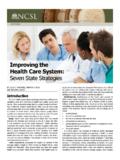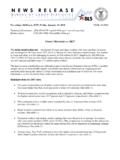Transcription of PLENARY SESSION I - NAST
1 PLENARY SESSION I A CENTURY OF PUBLIC HEALTH IN THE PHILIPPINES TEOOORA V. TIGLAO Professor Emeritus Institute of Public Health 'ity of the Philippines, J 000 Manila What is Public HeaIth "Public Health is ecological in perspective, multisectoral in scope and collahorative in strategy. It aims to improve the health of communities through an organized communi~v effort: Puhlic health i1~rrastructures need to reflect that it is an interdisciplinaty pursuit with a commitment to equity, puhlic participation, sustainahle develop-ment andfreedomfi'om war. As such it is part of a global commitment and strategy". - Ilona Kickbush Let us first have a bird's eye-view of the current health scenario in the Philippines. (fyou look back, as the year 1997 dawned on us, we were greeted by such dismal news as the measles outbreak. typhoid in Manila jail, lead in our water, increasing number of HIV/AIDS cases, hepatitis outbreak at , ebola virus in monkeys, the poor condition of the water supply, TB on the upsurge, etc.)
2 This grim picture seems to dominate the public health scenario today. Have we really not made any headway in the status of public health in the Philippines? Allow me to take you on a flight to the past, "back to the future" to view how the real situation is. Our first stop is the pre- american occupation. 7 8 PLENARY PAPER: A CENTURY OF PUBLIC HEALTH Pre- american Occupation The Americans did not establish public health in a vacuum. When Spain came to introduce occidental civilization in the country, she had withal to make use of the type of hygiene and preventive medicine then understood and practiced in the Iberian peninsula. She undeliberately prepared the grounds on which the Americans later launched the public health program and it would be unpardonable to ignore her contributions. As historian Boumestated in PHILIPPINE ISLANDS 1494-1898, the Philippines and Manila in particular were ahead of other English colonies with regard to provision for the sick and invalids.
3 Public health work during the Spanish regime inauspiciously began at the portera of the old Franciscan convent in Intramuros where a friar Fr. Juan Clemente put up a dispensary in 1577 for treating the indigents in Manila. This eventually became the San Juan de Dios Hospital (1659). When the Americans occupied the Philippines, there were already in operation: Five General Hospitals * The San Juan de Dios Hospital (1659) * Chinese General Hospital ( 1891 ) * Hospicio de San Jose in Cavite (1611 ) * Casa de la Caridad in Cebu * Infirmaries de Sta. Cruz in Laguna (i 870) Four Contagious Hospitals * San Lazaro Hospital (1577) * Hospital de Palestina in Camarines Sur * Hospital de Leprosos in Cebu * Hospital de Argencina in for smallpox and cholera Two Military Hospitals * * Hospital Militar de Manila Hospital Militar de Zamboanga Two Naval Hospitals * * Hospital dela Marie in Canacao, Cavite Hospital de Basilan in Basilan Other Hospitalsl Asylum * * * Hospicio de San Pascual Baylon in Manila Asylum ofSt.
4 Vincent de Paul in Manila for poor girls (1885) Founding Hospital of San Jose for orphaned children and mentally ill (1782) Teodora V. Tiglao 9 Real public health work started wit the creation of the Board ofYaccinators in 1806 to prevent smallpox. Later, the office of "Medicos titulares" (health officers) was created together with a Board of Health with a priest as president. Maritime quaran-tine was instituted (1885). Spain can also be credited for the construction of the Carrie do waterworks (1876); for founding the first medical school, University of Santo Tomas (1872); a school of midwifery in 1879, a public health laboratory (1883) and "medicos forense" (forensic medicine) in 1892. It may be worth mentioning the noble figure of Don Francisco de Carriedo as a benefactor of the City of Manila. He willed the amount of PI 0,000 to the city in 1733 to be invested in gainful trade and when the accumulated capital was sufficient, to employ it for the construction of waterworks.
5 This provided Manila with piped water which served as an effective prevention of water borne diseases. The american Military Government (1895-1907) Our next stop is the american occupation in 1898 during the Military and Commission form of Government (1898-1907). At the outset, the unsettled state of a tfairs demanded the attention of the Commission in areas deserving priorities other than public health. However, a Board of Health, was established and Dr. Guy Edi was appointed as first Commissioner. He was unable to report immediately as he con-tracted typhoid. The early pre-occupation of the Americans witnessed the control of epidemics-cholera, smallpox and plagues; the fight against other communicable diseases -leprosy, diarrhea, malaria as well as beri-beri; the establishment of a health organiza-tion and administration and general sanitation.
6 These activities were undertaken during this period that underscores these concerns: * * * * * * * * establishment of garbage crematory (1899) first sanitary ordinance and rat control (190 I) established technologically that contaminated water and unclean veg-etables are important factors in the control of amoebic dysentery while Anopheles minimus was first pointed out as the vector of malaria (1904) cholera vaccine was first tried (1905) followed by compulsory vaccina-tion of school children confirmation of the theory that plague in man comes from infected rats (1905) opening of the leper colony in Culion and compulsory detection oflepers (1906) founding of the Manila Medical Society and the Philippine Island Medi-cal Association (1902 & 1903). opening of the College of Medicine with Preventive Medicine as one the departments ( 1907) 10 PLENARY PAPER: A CENTURY OF PUBLIC HEALTH Medical education was one of the concerns of the Insular Board of Health not only because of the intimate relationship of medicine to sanitation but because of the scarcity oflocal physicians.
7 The only existing medical school was the University of Sto. Tomas. Of outstanding importance to public health was the establishment of the Bureau of Science in 1905. Working in close collaboration with the Philippine General Hospital and the University of the Philippines, it became an active center for scientific instruction and research and madc valuable contributions to public health. Philippine Assembly (1907-1916) We arrive at our next stop, the period of the Philippine Assembly (1907-1916), a step towards Filipinization. While most of the executive departmcnts were placed under Filipinos, the Bureau of Health remained under american administration. The public health program started to take off. Major developments in public health took place. The period was marked with several "first". 1908 1909 1910 * * * * * * * * * * * first institution of the search for germ carriers the new waterworks in Manila was inaugurated first using gcneral chemical disinfection as emergency measure against cholcra first recruitment of nursing students who began studies as the Philip-pine Normal School sponsored by business firms in Manila passing of the Employers Liability Law which made employers liable for injury and death of employees inclusion of Hygiene and Physiology in the curriculum ofpuhlic elemen-tary schools start of anti-tuberculosis campaign with P35.
8 OOO appropriation from the government conduct offirst sanitary survey of rural community dissemination of the results of first nutrition survey organization of the Philippine Tuberculosis Society opening of Pasteur Prophylaxis treatment against rahies recognizing that Beri-beri as associated with eating white polished rice opening of the Philippine Gcneml Hospital with the P 1,000,000 appropria-tion from the government 1911 1912 1913 1914 * Teodora V. Tig/ao II First demonstrated the eradication ofberi-beri among Philippine scouts by means of simple change in the diet. The first epidemic ofberi-beri was described by Koeniger in 1882. It was claimed that 60% of infant mortality was due to infantile beri-beri. The results of the researches of Fraser and Stanton, Aron and Hocson, Cromwell and Concepcion advanced the theory that the etiology of beri-beri is food defi-ciency especially diet consisting mainly of rice.
9 This theory was endorsed by the Far Eastern Association of Tropical Medicine in 1910. The credit for the discovery of a specific treatment for the disease, tiqui-tiqui extract belongs to Chamberlain of the Army Board for the study of Tropical Diseases and two Filipino physicians: Dr. Joaquin Quintos and Dr. Manuel S. Guerrero. In 1914, Congress passed a law allowing free distribution of tiki-tiki to indigent mothers. The control and prevention of beri-beri is a distinct triumph of modern medicine. Some practitioners, however, discount the existence of the disease. * * * * * * * * initial use of anti-typhoid vaccine use of hypochlorite of lime for the first time for treating Manila water supply initial study on vitamin deficiency as cause ofberi-beri which ultimately culminated in the isolate of Vitamin Biothiamine use of etiology of amoebic dysentery in the detection of carriers and mild cases first use of dry vaccine against smallpox with successful results with potency for two months versus one week of glycerinated lymph vaccine first offering of graduate courses in hygiene and tropical medicine at the UP College of Medicine.
10 Manufacture and free distribution of tiki-tiki for treatment ofberi-beri inauguration of first "clean up week" Rise of non-government health organizations, such as: Gota de Leche, later named La Protection de la Infancia for the protection and care of infants; La Liga Nacional Filipinos Para la Protecion de la Infancia; Associacion de Damas Filipinas to help poor women and children; Settle-ment House - for the temporary shelter of destitute women and children; and Women's clubs. 12 PLENARY PAPER: A CENTURY OF PUBLIC HEALTH Definitely, public health has gained momentum and one could view the impor-tant cornerstones upon which the public health program could be erected. Techno-logical advances were visible and the epidemiology of common communicable dis-eases-tuberculosis, rabies, typhoid and beri-beri had been defined and control measures instituted such as immunization, environmental sanitation and proper nutrition, smallpox, cholera and plague were gradually brought under control.







